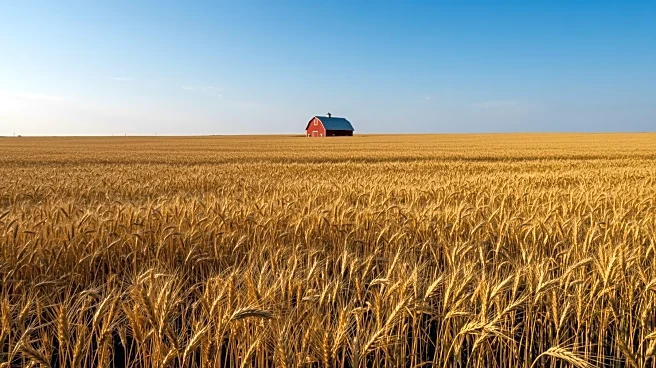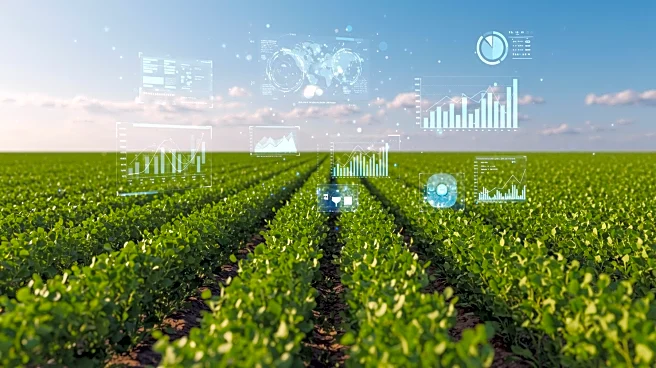What's Happening?
Agriculture Canada has forecasted robust yields for most crops on the Canadian Prairies, utilizing computer modeling completed at the end of July. The Canadian Crop Yield Forecaster model anticipates above-average yields per unit area for 11 out of 12 spring-planted crops when compared to the average yields from 2020 to 2024. This prediction is based on yield projections and estimated harvest areas from Statistics Canada's June 2025 Farm Survey. The crops expected to see above-average production include spring wheat, winter wheat, durum wheat, canola, corn for grain, soybeans, dry peas, lentils, canary seed, and fall rye. The forecast is generated using computer simulations that incorporate agro-climate data such as precipitation, summer temperatures, and soil moisture, alongside satellite images that assess vegetation health and density.
Why It's Important?
The forecasted strong crop yields on the Prairies are significant for several reasons. Firstly, they suggest a potential boost in national agricultural production, which could positively impact the Canadian economy by increasing export opportunities and stabilizing domestic food supply. For U.S. stakeholders, this could mean increased competition in international markets, particularly for crops like wheat and canola, where Canada is a major player. Additionally, the forecast highlights the importance of technological advancements in agriculture, such as the use of computer modeling and satellite imagery, which can enhance predictive accuracy and help farmers make informed decisions. This development underscores the growing role of data-driven approaches in modern agriculture, which could influence farming practices and policies in the U.S. and beyond.
What's Next?
As the growing season progresses, stakeholders will closely monitor actual yield outcomes compared to the forecasts. Any significant deviations could prompt adjustments in market strategies and pricing. Additionally, the U.S. agricultural sector may need to consider strategic responses to maintain competitiveness in the face of potentially increased Canadian exports. Policymakers and industry leaders might also explore further investments in agricultural technology to enhance yield predictions and optimize resource use. The outcomes of this forecast could influence future agricultural policies and trade negotiations between the U.S. and Canada.
Beyond the Headlines
The reliance on advanced technology for yield forecasting highlights a broader trend towards precision agriculture, which could lead to more sustainable farming practices. By optimizing inputs like water and fertilizers based on precise data, farmers can reduce environmental impacts while maintaining high productivity. This shift could also drive policy changes aimed at supporting technological adoption in agriculture, potentially leading to increased funding for research and development in this area.












